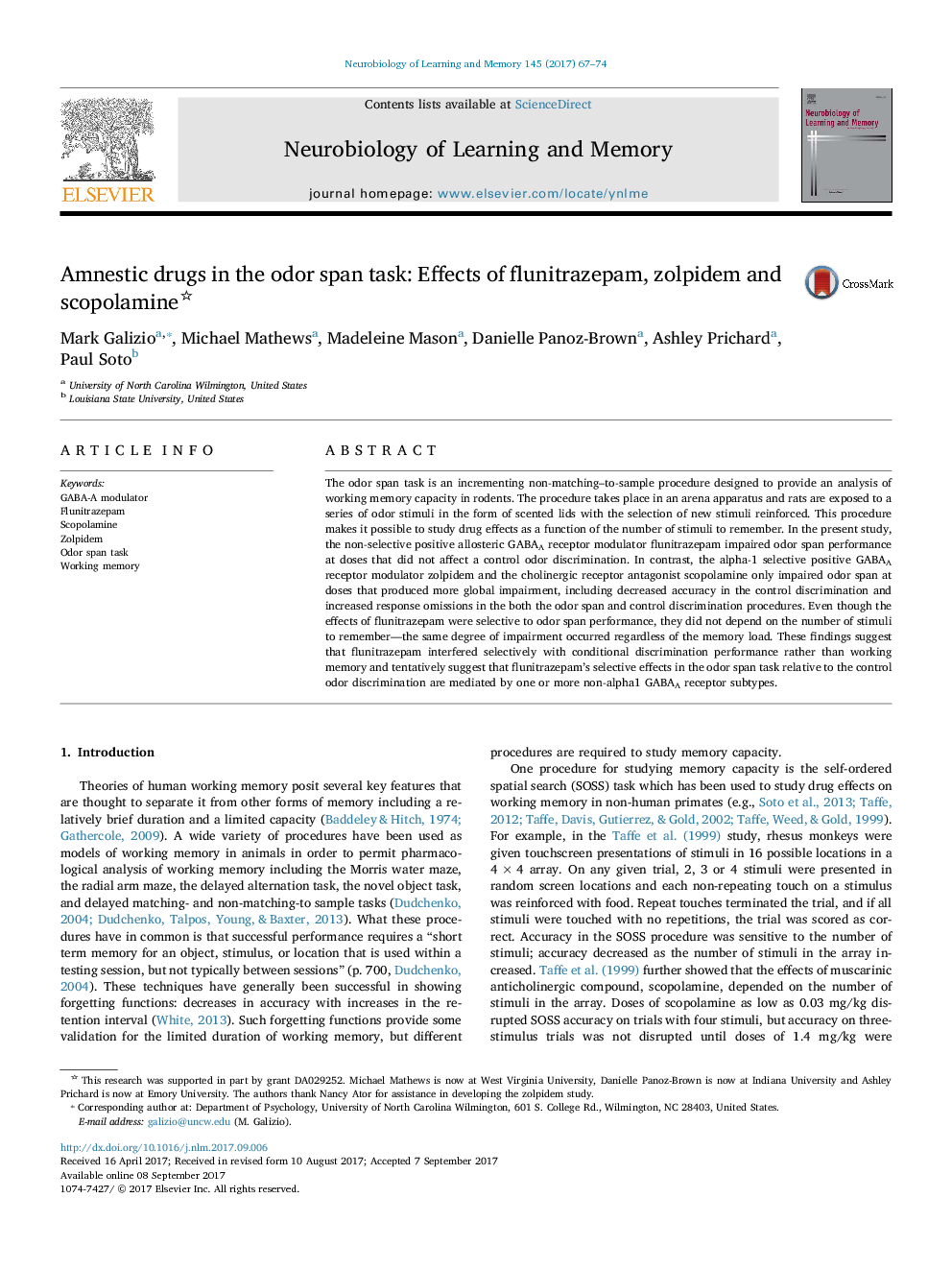ترجمه فارسی عنوان مقاله
داروهای ضد افسردگی در طول بوی عود: اثرات فلو تریزپام، زولپیدم و اسکاپولامین
عنوان انگلیسی
Amnestic drugs in the odor span task: Effects of flunitrazepam, zolpidem and scopolamine
| کد مقاله | سال انتشار | تعداد صفحات مقاله انگلیسی |
|---|---|---|
| 156872 | 2017 | 8 صفحه PDF |
منبع

Publisher : Elsevier - Science Direct (الزویر - ساینس دایرکت)
Journal : Neurobiology of Learning and Memory, Volume 145, November 2017, Pages 67-74

